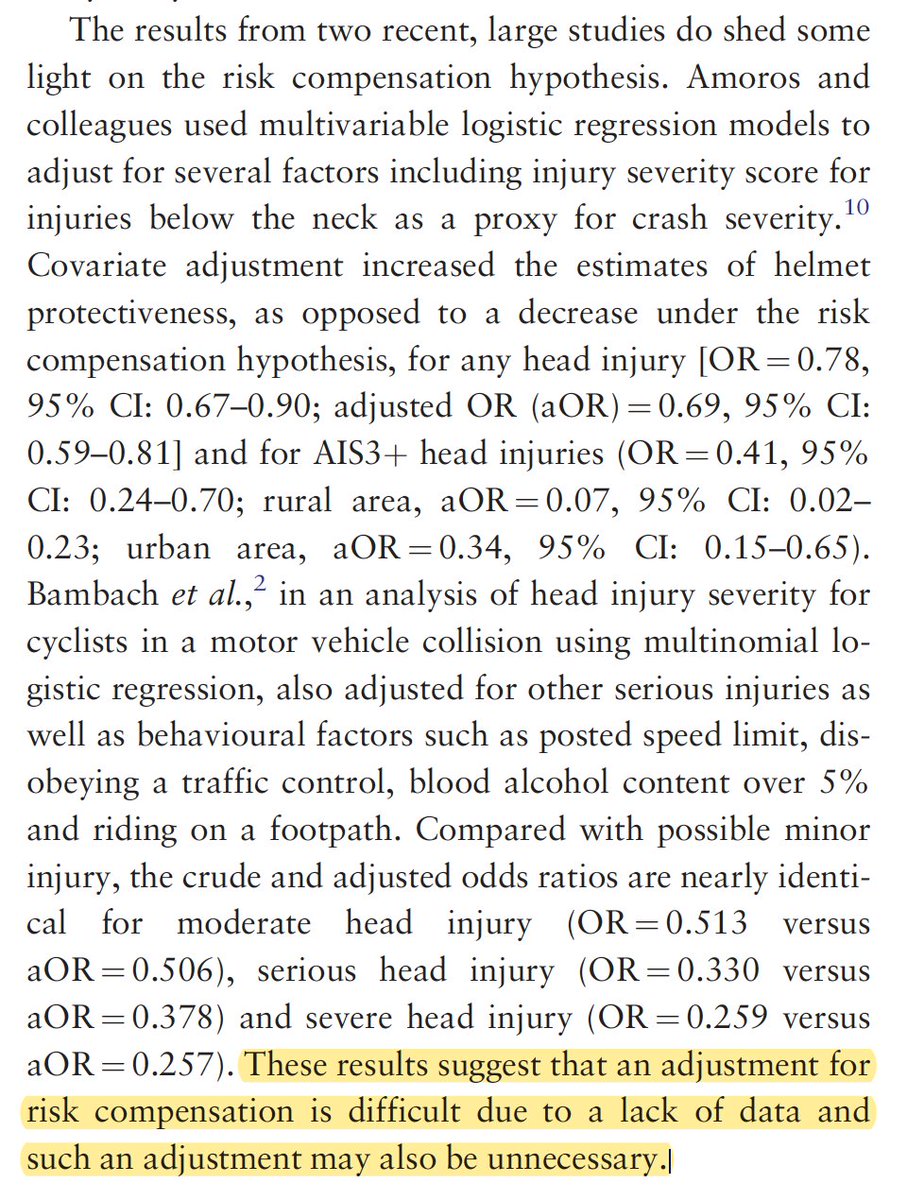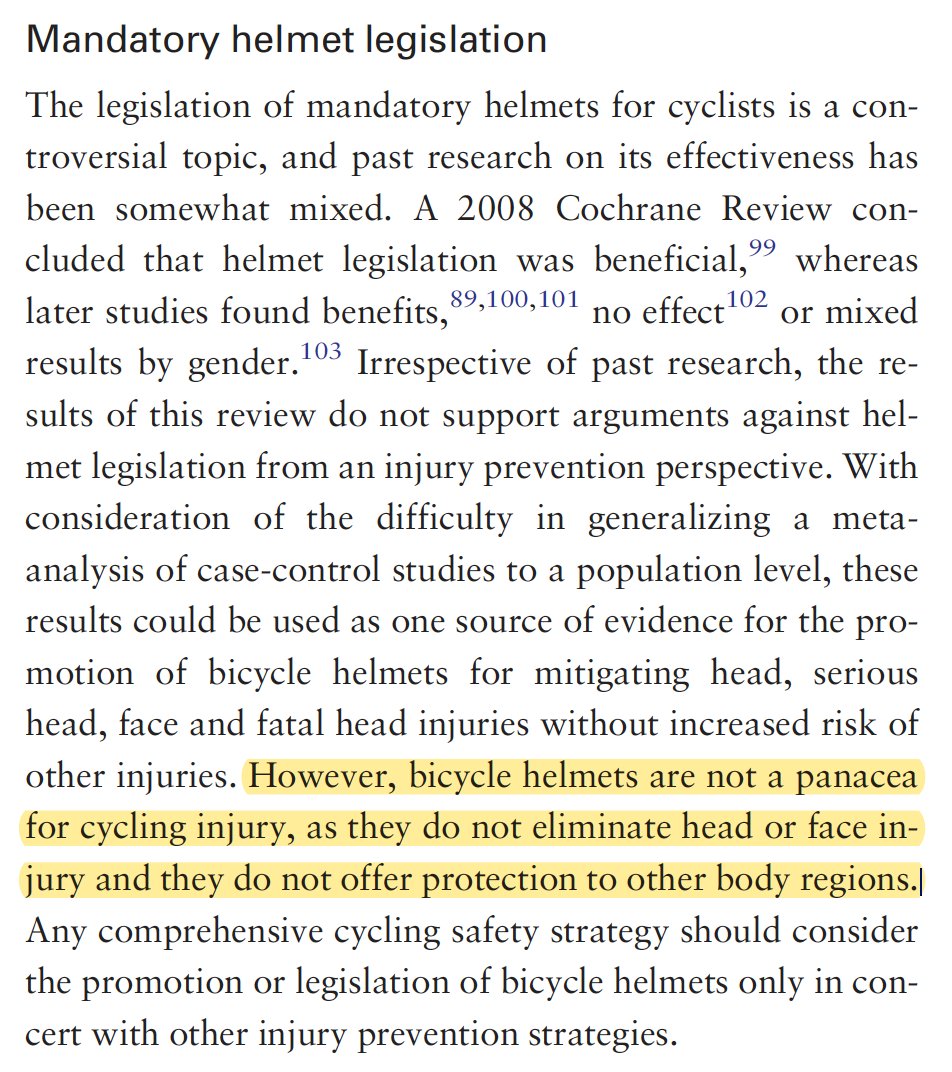I find this quite interesting; the estimates for the association between wearing a #mask and some coronavirus infection in non-hc setting (0.56, 95% CI: 0.40-0.79) is roughly the same magnitude as the association for #bicyclehelmet and head injury (0.49, 95% CI: 0.42-0.57) 1/9
Are they both confounded? You bet. But they& #39;re also both mechanistically plausible. And there& #39;s some major issues with conducting RCTs for both. Ethical reasons for helmets, and for masks, statistical power issues (adherence, sample size, disease prevalence) seem pretty bad 2/9
With helmets, the people wearing them probably have some different characteristics than non-users, that causes confounding. Probably they& #39;re more cautious and take less risks in traffic. It& #39;s also possible that for some individuals, helmet causes risk compensation... 3/9
...but not to the extent that it would offset the population-level benefit. And in fact, adjusting for risk compensation might not change the results 4/9
https://academic.oup.com/ije/article/46/1/278/2617198">https://academic.oup.com/ije/artic...
https://academic.oup.com/ije/article/46/1/278/2617198">https://academic.oup.com/ije/artic...
It should also be noted that indeed, wearing a helmet doesn& #39;t prevent head injuries altogether; they just reduce the risk. Mandatory helmet legislation can& #39;t be expected to eliminate head injuries and helmet& #39;s don& #39;t protect from other injuries sustained from falling 5/9
This is analogous to #facemask discussion; no, masks don& #39;t stop the entire spread of #COVID19, just reduce the risk. Masks don& #39;t stop all routes of transmission. Failure of containment in some countries with mandatory masking is not evidence that they& #39;re useless. 6/9
I think it& #39;s probable that masks are in fact a multifactorial population-targeted intervention where looking at the observational estimate is very useful. It captures also the psychology of masks; they& #39;re a constant reminder not to touch your face, safe distances etc. 7/9
Observational estimate for mask is confounded by factors not directly linked to blocking droplets, but the recommendations are aiming to combine those confounders into practice. The estimate is also a likely combination of protecting the wearer from others but also vice versa 8/9

 Read on Twitter
Read on Twitter





